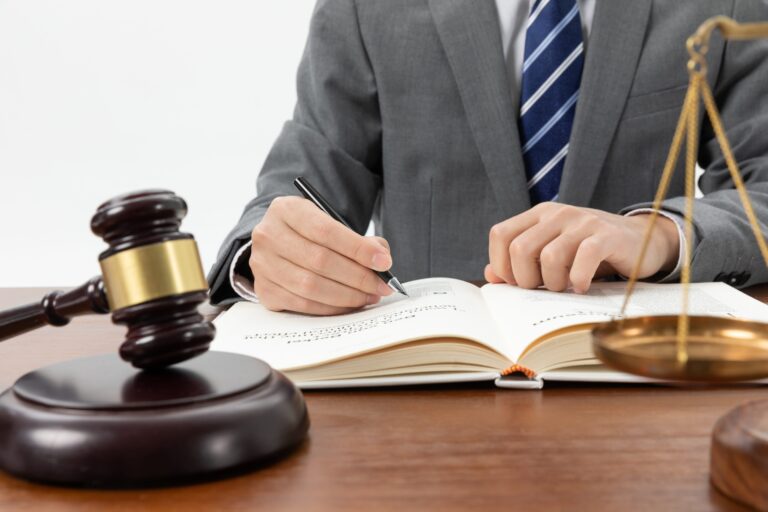Justice Unleashed: The Mighty Authority and Positive Impact of Section 313 CrPC

313 crpc
Introduction of Section 313 CrPC:
Section 313 crpc, Our criminal justice system is procedurally supported by the Criminal Procedure Code (CrPC), which carefully directs the conduct of criminal proceedings to preserve the values of justice and fairness. Tucked down in its clauses, Section 313 crpc stands out as a unique feature that adds interaction to the legal process. Fundamentally, Section 313 crpc adds a personal touch to the trial process by upholding the accused’s fundamental right to be heard. This part allows the accused to refute the evidence used against them, giving their side of the story a rare opportunity to be taken into account.
In the pages that follow, this project will undertake a thorough analysis of Section 313 crpc to reveal its legal complexities and break down its practical implementations in the criminal justice system. We examine the legislative intent that led to the inclusion of this clause and explore its historical foundations. We will clarify the timing, manner, and type of inquiries that are asked under Section 313 crpc as we go through its procedural complexities, illuminating its function as a tool for extracting important evidence during trials.
This project goes beyond the procedural aspects and explores the legal environment around Section 313 crpc as well. We examine its importance in guaranteeing a just trial, examining seminal rulings and case law that have influenced its interpretation. But every legal provision has its share of discussions and disagreements. As a result, we will examine the debates and objections raised by Section 313 crpc and offer a fair assessment of both its advantages and disadvantages.
This project essentially attempts to be a thorough guide to Section 313 of the CrPC, providing a wider understanding of its influence on the dynamics of criminal trials in addition to an analytical breakdown of its legal components. Through navigating this section’s complexities, we hope to add to the continuing conversation about criminal procedure and highlight the crucial role that Section 313 crpc plays in defining justice within our legal system.
Understanding Section 313 CrPC:
Understanding the critical role that Section 313 crpc of the Criminal Procedure Code (CrPC) plays in the dynamics of criminal trials is essential when examining its nuances. A unique interactive element is included in Section 313 crpc where the accused is given a chance to directly respond to and clarify the evidence used against them. By giving the accused a chance to tell their side of the story, this clause departs from standard trial processes and helps to create a more thorough and equitable adjudication process.
Examining Section 313 CrPC: In essence, Section 313 crpc gives the trial judge the power to question the accused at any point throughout the trial, following the examination of the prosecution’s witnesses. This examination is more than just a formality; it is an important opportunity for the accused to address the evidence against them. Section 313 crpc inquiries are intended to cover not just the evidence that incriminates the accused but also any favorable circumstances or factors that may be in their favor. Because of this, Section 313 crpc is a special procedural instrument that encourages open communication between the accused and the court.
Goal and Importance: There are several aspects to Section 313’s goal. It attempts to make sure the accused is informed of the evidence against them, giving them a chance to clarify any inconsistencies or provide more details. This preserves the trial record’s accuracy and completeness while also upholding the fundamentals of natural justice. This clause is important because it can highlight details that would otherwise go unnoticed, leading to a more comprehensive and sophisticated analysis of the case.
Procedure and Timing: It’s important to comprehend Section 313’s procedural features. Usually, the clause is utilized after the prosecution has finished presenting its case and before the accused is given the opportunity to present a defense. Using her discretion, the trial judge poses questions to the accused, who is then given a chance to answer. The timing and procedure are meticulously planned to guarantee that the accused’s justifications are taken into account before the trial continues, so strengthening the idea of impartial and well-informed decision-making.
Legal Safeguards and Fair Trial: Section 313 crpc serves as a legal protection by combining the right to a fair trial with the primary objective of safeguarding the accused’s right to be heard. It emphasizes the necessity of a thorough and objective analysis of the evidence, which is consistent with the constitutional concepts of due process and natural justice.
In the parts that follow, we shall dissect Section 313’s layers, looking closely at its legal subtleties, practical applications, and wider consequences for criminal procedure. Gaining a thorough grasp of Section 313 crpc paves the way for a more in-depth investigation of its uses, difficulties, and contributions to the pursuit of justice within the bounds of our judicial system.
Procedural Aspects:
It is clear from looking at the procedural components of Section 313 crpc of the Criminal Procedure Code (CrPC) that this section adds a new phase to the criminal trial process. The careful planning of the chronology and flow of events guarantees that the defendant has a significant chance to refute the evidence that has been used against them. Now let’s explore the main procedural aspects:
Timing and Invocation: Section 313 crpc is usually brought into play following the prosecution’s witness examination. The accused is able to address the court after learning all the details of the case against them thanks to the clever scheduling. It is an important transitional period between the prosecution’s case and the start of the accused’s defense. The timetable is carefully planned to strike a compromise between the accused’s right to information and a hearing and the necessity for the trial record to be comprehensive.
Trial Judge’s Role: Using discretion, the trial judge actively participates in this stage of the process. The judge poses questions to the accused after the prosecution presents its case. This is a non-mechanistic procedure that takes the particulars of each case into careful consideration. The judge has to obtain pertinent information that might help with a more thorough comprehension of the circumstances surrounding the accused offenses.
Question Type: Section 313 crpc inquiries are intended to be wide-ranging in nature. They include any facts or situations that the accused would want to bring to the court’s notice, in addition to the specific charges and supporting documentation. The goal of this inclusion is to guarantee that every topic pertinent to the case is thoroughly explored. The format of these questions highlights the necessity for the accused to provide a thoughtful and unique response, encouraging a dialogue between the court and the person who is being charged.
Accused's Reaction:
First and foremost, Section 313 crpc gives the accused the right to stay silent throughout this questioning. If the accused choose to reply, though, their words become a part of the trial record and are open to the court’s consideration during its concluding arguments. This clause adheres to the more general standards of a fair and just trial while respecting the accused’s right to self-determination regarding whether or not to explain.
Contribution to Trial Completeness: A substantial portion of the trial process’s completion can be attributed to the procedural complexities of Section 313 crpc. The clause that grants the accused a chance to address the court enables the presentation of a more comprehensive story, maybe revealing details that were missed during the prosecution’s case.
It is clear from navigating through the procedural features of Section 313 crpc that this provision emphasizes the value of a fair and inclusive approach in the pursuit of justice, in addition to providing depth to the trial process. We shall go into further detail about the probable difficulties, legal ramifications, and practical effects of implementing Section 313 crpc in the context of the criminal process in the parts that follow.
Legal Implications and Precedents:
Section 313 crpc of the Criminal Procedure Code (CrPC) has wide-ranging legal ramifications that touch on issues like as judicial precedent, fair trials, and constitutional principles. Through an examination of the jurisprudential landscape pertaining to this clause, its relevance and impact within the legal framework can be discerned.
Ensuring a Fair Trial: The protection of the right to a fair trial is one of Section 313’s most important legal ramifications. The clause serves as a safety measure, guaranteeing that the defendant is given a substantial chance to refute the evidence used against them. Section 313 crpc supports the fair and just resolution of criminal proceedings by allowing the accused to tell their side of the story. This is in line with the constitutional requirements of due process and natural justice.
Constitutional Dimensions: There has been debate and examination over the constitutionality of Section 313’s provisions. Courts have frequently read this clause in the context of larger constitutional ideas, highlighting the accused person’s right to a fair and impartial trial. To guarantee that the accused is given a legitimate chance to respond to the charges against them, precedents have highlighted the necessity of the questions posed under Section 313 crpc being precise, pertinent, and unambiguous.
Legal Precedents and Landmark Judgments:
Over the years, Section 313 crpc has been the subject of multiple court rulings that have shaped the parameters of its implementation. Notable rulings have offered complex explanations and established principles for trial courts to follow when interpreting and applying Section 313 crpc of the law. These judicial decisions, which provide direction on how to properly apply this law, greatly enhance the uniformity and coherence of the criminal justice system.
Statements Made by the Accused Under Section 313 crpc: Statements made by the accused under Section 313 crpc are considered evidence. Despite the accused’s right to silence, any statements they make are recorded during the trial and may be taken into account by the court while it deliberates. Section 313 crpc plays a significant role in determining the evidentiary landscape of criminal trials, as these comments have the potential to impact the court’s determination of guilt or innocence.
Justice and Rights: The careful balance that must be struck between the pursuit of justice and the rights of the accused has legal ramifications as well. In their rulings, courts frequently struggle with how to provide a fair trial while upholding the accused’s autonomy. Maintaining the integrity of the criminal justice system and safeguarding the concepts of equity and fairness depend on finding this balance.
It is clear from examining the legal ramifications and prior decisions surrounding Section 313 crpc that this clause is more than just a formality; rather, it is a pillar of our legal system. We can better understand how Section 313 crpc contributes to the difficult balance between the rights of the accused and the requirements of a just and equitable legal procedure by looking at its implications. The ensuing sections will go more into the changing legal terrain surrounding this clause, examining how it is applied in modern jurisprudence and any potential obstacles.
Conclusion:
To sum up, Section 313 crpc of the Criminal Procedure Code is an important and complex clause that has a big impact on how criminal trials work in our justice system. After going over all of this section’s nuances, it is clear that Section 313 crpc is a device that enhances the criminal justice system’s complexity, fairness, and transparency rather than being only a procedural formality.
Guaranteeing an Involved Trial Procedure:
One of the most important things to remember is that Section 313 crpc is participatory. This clause encourages communication between the accused and the court outside of the conventional adversarial dynamics by giving them a forum to interact directly with the court. It emphasizes how crucial it is to provide the accused the opportunity to express their viewpoint in order to foster a more comprehensive understanding.
Justice and Rights:
Section 313 crpc captures the precarious equilibrium between the pursuit of justice and the rights of the accused. The procedural protections incorporated in this section are consistent with the constitutional ideals of due process and natural justice. Since Section 313 crpc affords the accused a chance to refute the evidence, it is consistent with the fundamental tenets of our judicial system.
Legal Importance and Previous Cases:
The interpretation of Section 313 crpc in several court rulings and legal precedents is significant from a legal standpoint. The parameters of its application have been formed by landmark judgments, which offer guidance to lower courts and emphasize the significance of asking precise and targeted questions. The provision’s evidentiary value influences the determination of guilt or innocence and adds layers to the legal environment.
Contributions to Trial Completeness:
Section 313 crpc makes a substantial contribution to the trial process’s completion. It provides opportunities to reveal details that could have gone unnoticed by enabling the accused to offer their side of the story following the prosecution’s case. This thoroughness is essential for making a fair and knowledgeable choice.
Difficulties and Debates:
Like every legal regulation, Section 313 crpc is not without its difficulties and disagreements, though. Sustained examination and debate are necessary due to the possibility of misuse, worries regarding the wording of the questions, and the fine line that must be drawn between the accused’s right to silence and their need to explain.
Prospects for the Future:
Future considerations for the applicability of Section 313 crpc may arise from the changing legal environment and societal expectations. Prospective viewpoints might entail investigating adjustments or modifications to tackle new issues while maintaining the general goals of justice and fairness.
Section 313 crpc is a tribute to the dynamic nature of our legal system in the context of criminal proceedings. It is a clause that represents the larger ideas that guide our conception of justice as well as the particulars of trial process. As we draw to a close, we understand that Section 313 crpc is more than just a legal provision; it is a representation of the judicial system’s dedication to a process that looks for the truth, justice, and the defense of individual rights.



